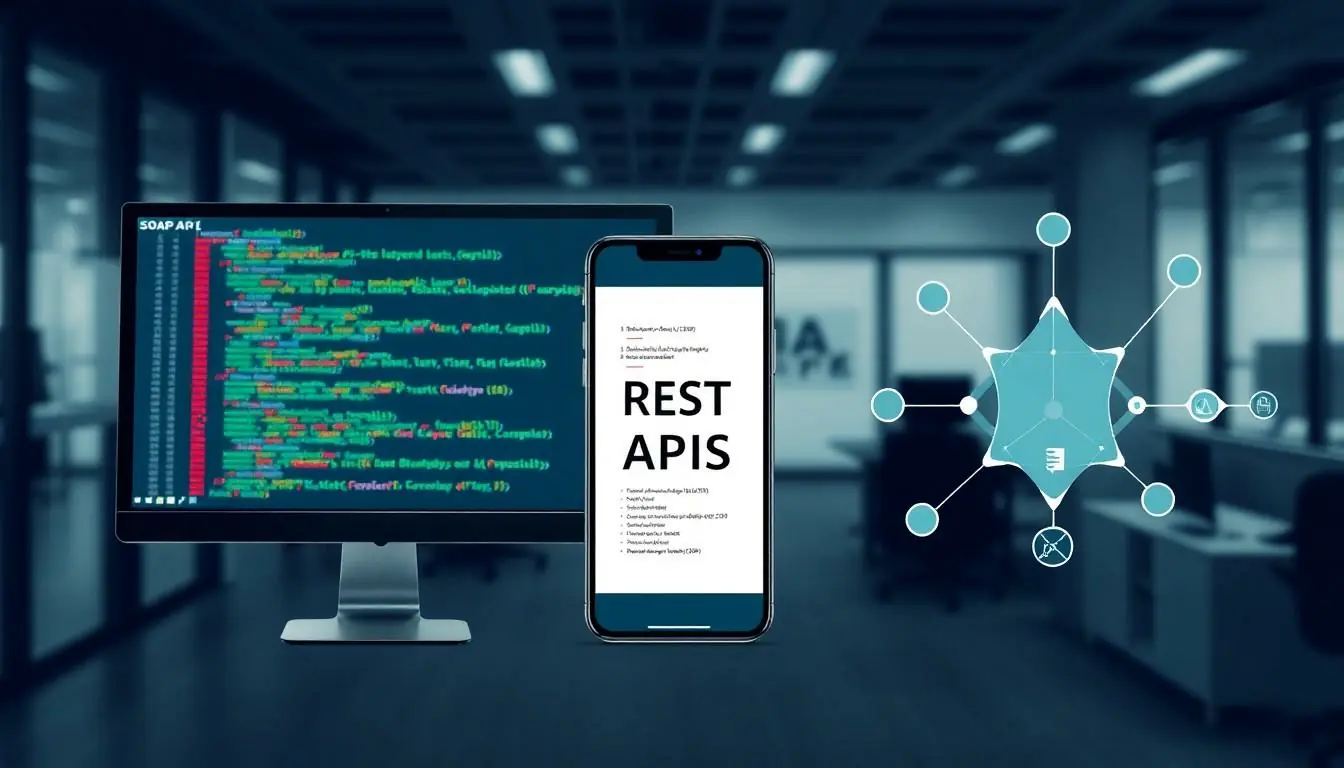Table of Contents
ToggleIn today’s tech-savvy world, web services APIs are the unsung heroes of digital communication. Imagine trying to order a pizza without a phone or app—chaos, right? APIs act like the friendly waiter that takes your order and ensures everything runs smoothly behind the scenes. They connect different software applications, allowing them to share data and functionality effortlessly, like a well-rehearsed dance team.
Overview of Web Services API
Web services APIs play a vital role in enabling communication between different software applications. They allow diverse systems to interact, facilitating efficient data exchange. Various industries leverage these APIs to enhance functionality and streamline operations.
Organizations utilize REST (Representational State Transfer) and SOAP (Simple Object Access Protocol) as common protocols for web services APIs. REST is known for its simplicity and uses standard HTTP methods. SOAP provides a more comprehensive protocol with built-in error handling, making it suitable for complex transactions.
JSON (JavaScript Object Notation) and XML (eXtensible Markup Language) serve as popular data formats. JSON’s lightweight structure makes it easier for developers to work with and increases speed. XML, while more verbose, offers rich data representation and supports complex requirements.
Web services APIs support interoperability among various platforms. Businesses integrate with third-party services through APIs, enabling functionalities like payment processing and social media sharing. This connectivity creates a more unified user experience, allowing applications to communicate seamlessly.
Security is paramount in online interactions through web services APIs. HTTPS encrypts data in transit, protecting sensitive information. OAuth 2.0 provides secure authorization, ensuring that applications access only designated data.
Developers use web services APIs to enhance product features, drive innovation, and leverage existing external services. By connecting applications with APIs, businesses can adapt quickly to changing market demands. Enhanced efficiency, improved scalability, and reduced operational costs are direct benefits of employing web services APIs.
Types of Web Services APIs

Web services APIs come in various types, each with distinct features serving specific needs. The three prominent types include SOAP APIs, REST APIs, and GraphQL APIs.
SOAP APIs
SOAP APIs utilize the Simple Object Access Protocol for communication. They support operations wrapped in a standardized XML message format, ensuring reliability and security. This type of API provides a formal contract described by WSDL (Web Services Description Language), specifying available methods and data types. SOAP has built-in error handling and adheres to strict standards, making it suitable for enterprise-level applications that require high security and transaction reliability.
REST APIs
REST APIs operate on the principles of Representational State Transfer. They leverage standard HTTP methods like GET, POST, PUT, and DELETE for client-server communication. These APIs typically use lightweight data formats such as JSON or XML, favoring simplicity and speed. REST APIs allow easy integration with various services, making them popular for mobile and web applications due to their flexibility and ability to handle large volumes of requests efficiently.
GraphQL APIs
GraphQL APIs offer a flexible approach to data retrieval. They allow clients to specify the exact data needed, minimizing overfetching or underfetching of resources. With a single endpoint, GraphQL simplifies API management and reduces the number of requests required. This API type supports real-time data updates, making it highly suitable for applications that require dynamic content and effective user engagement. Additionally, GraphQL’s strong type system helps ensure data integrity and fosters better collaboration between front-end and back-end developers.
Key Features of Web Services APIs
Web services APIs offer essential features that enhance communication and functionality across software applications.
Interoperability
Interoperability stands as a core feature of web services APIs. They enable diverse applications to communicate and share data seamlessly. Different platforms, whether cloud-based or on-premise, integrate easily through these APIs. Businesses benefit by connecting disparate systems, facilitating data exchange without extensive customization. For example, a CRM can connect with an email marketing platform, allowing contact management and outreach to occur efficiently. This capability fosters collaboration across industries, driving innovation and improving user experience.
Scalability
Scalability significantly impacts the effectiveness of web services APIs. They allow applications to grow and adapt to increasing demand without compromising performance. Developers can scale services horizontally by adding more instances or vertically by enhancing server capabilities. Popular APIs like REST and GraphQL inherently support scalability by utilizing lightweight protocols and flexible data retrieval methods. As a result, organizations can handle increased traffic or expansion into new markets with ease. The ability to maintain performance during growth becomes vital for sustaining competitive advantages.
Security
Security forms a critical aspect of web services APIs. Protecting sensitive data during transmission is a priority for organizations relying on these services. HTTPS provides an essential layer of encryption, ensuring that data remains secure. Additionally, OAuth 2.0 offers robust authorization mechanisms, allowing users to grant access without sharing passwords. Implementing security best practices not only safeguards information but also builds trust with users. Companies ensure compliance with data protection regulations by prioritizing security in API development and usage. Thus, secure APIs are crucial for maintaining operational integrity and reputation.
Best Practices for Using Web Services APIs
Using web services APIs effectively relies on understanding key best practices. Developers must implement appropriate strategies to enhance security, functionality, and user experience.
Authentication Methods
Authentication measures protect data exchanged between clients and APIs. OAuth 2.0 is a widely adopted framework that allows secure token-based access to resources. Utilizing API keys enables unique identification of applications or users, simplifying access management. Implementing mutual TLS offers an additional layer of security by ensuring both parties in communication authenticate each other. Choosing the right authentication method ensures only authorized users access sensitive data, which is critical for maintaining data integrity.
Versioning Strategies
Version control supports the evolution of APIs while maintaining stability for existing users. Semantic versioning employs a three-part number system, allowing easy identification of changes in functionality. Using URL-based versioning involves embedding version numbers directly in endpoint URIs, making updates clear and accessible. Header-based versioning can also keep the URI clean while enabling flexibility in responding to various client needs. Establishing a versioning strategy helps manage changes effectively, ensuring seamless transitions for users.
Web services APIs serve as the backbone of digital interactions in today’s interconnected world. They enable diverse applications to communicate effortlessly while ensuring data security and efficiency. By understanding the different types of APIs and implementing best practices, businesses can optimize their operations and enhance user experiences. As technology continues to evolve, leveraging these powerful tools will be essential for driving innovation and maintaining a competitive edge. Embracing web services APIs not only streamlines processes but also paves the way for future growth and adaptability in an ever-changing digital landscape.






